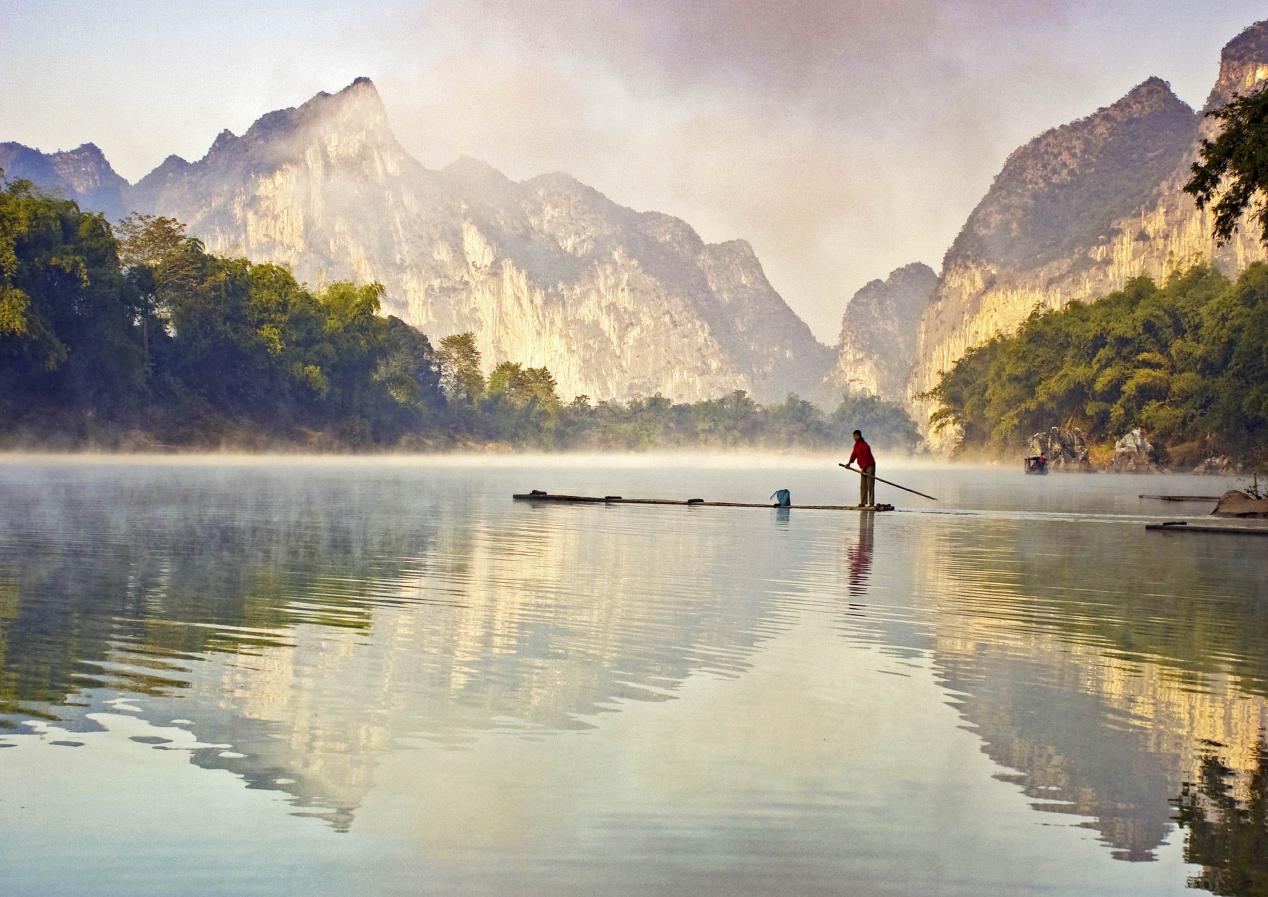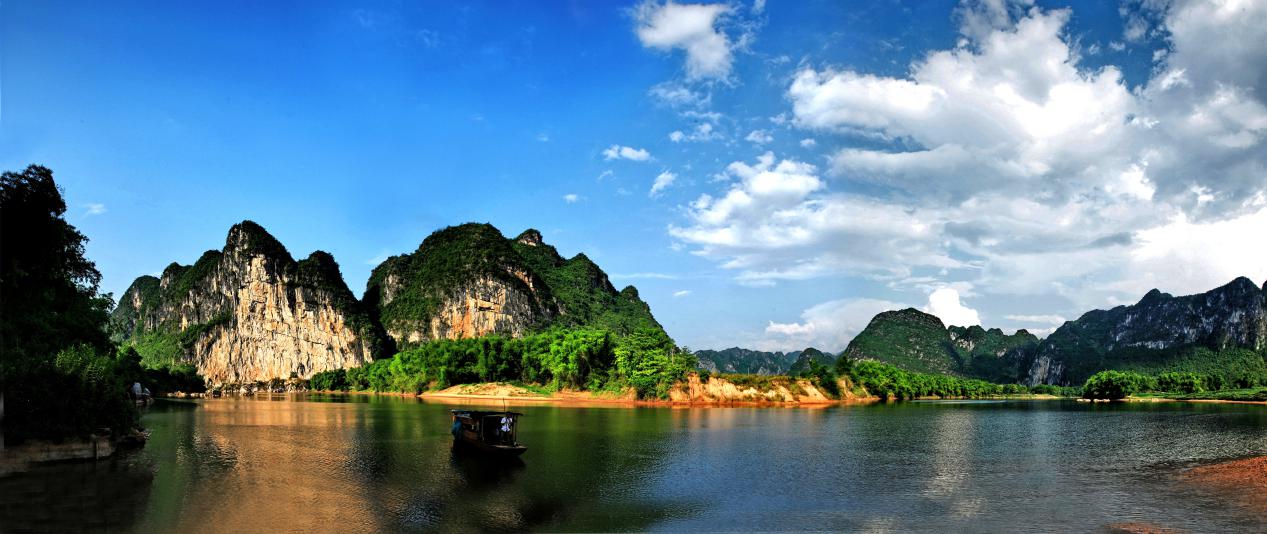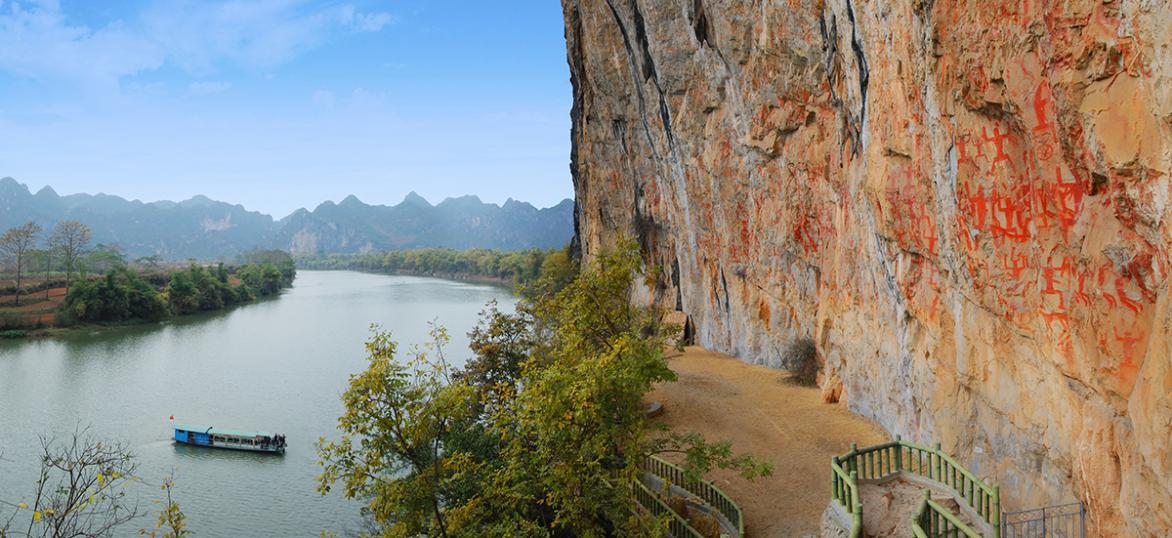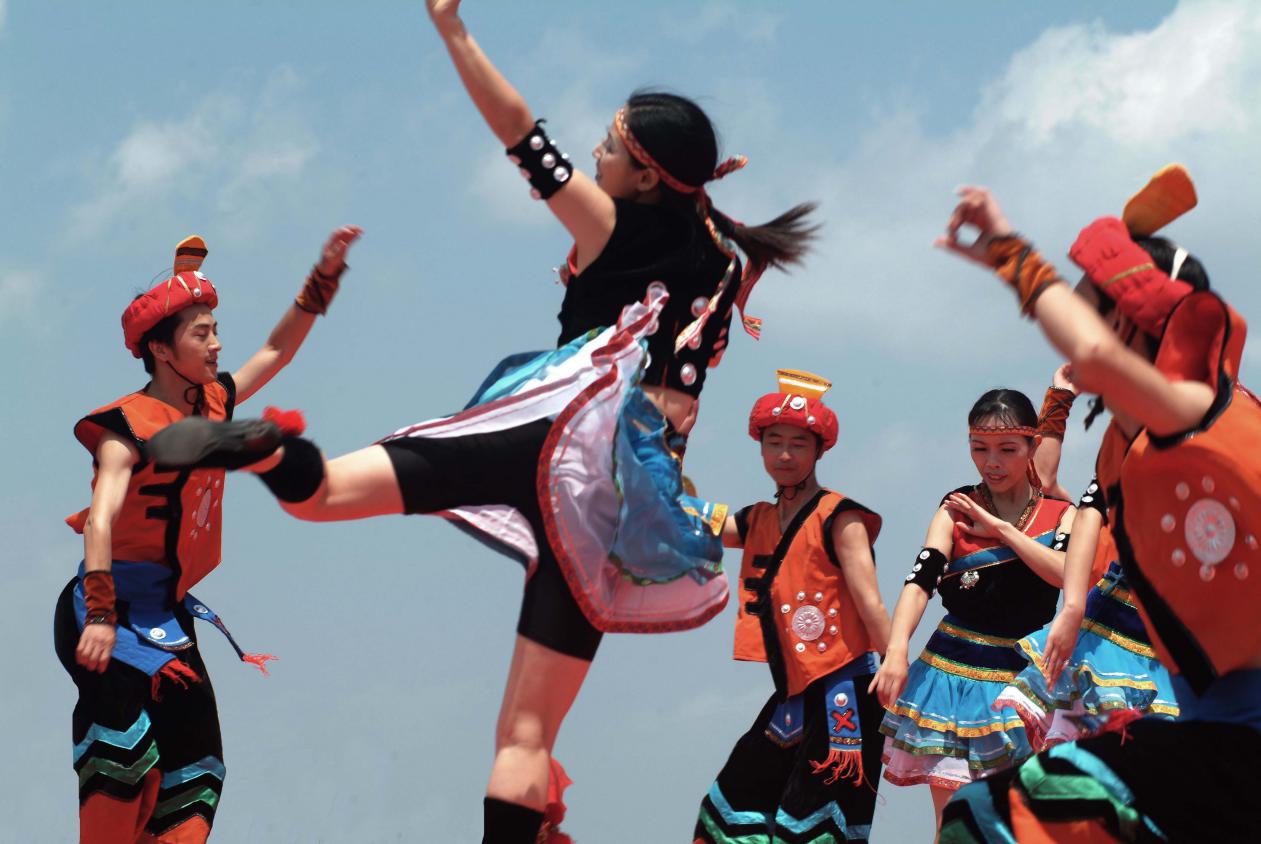Go Southward to Reveal the Mysterious Huashan Rock Painting
Publication time:2020-12-14 17:52:35
(By Mo Tingting)If you have entered Chongzuo City, Guangxi, let me remind you that you should keep in mind every record of impression wherever you may reach. More than 2,000 years ago, Luoyue people created some magnificent pictures on the precipice along the banks of the Zuojiang River of Chongzuo. It constitutes the splendid cultural landscape of Zuojiang River and Huashan Rock Painting together with its relying mountains, rivers and platforms, which includes about 105 km of Zuojiang River and Mingjiang River section. The extremely magnificent Huashan Rock Painting could make you feel too excited to be homesick.

Intoxicating art gallery
Go southward from Nanning, the capital of Guangxi, you would come to the Sino-Vietnam border city — Chongzuo. In such a mysterious neat and graceful place, there are unique regional advantages, beautiful landscape sceneries, profound national customs, dignified cultural accumulation, and extremely abundant tourism resources. Anyone having been to Chongzuo will be captivated by its beautiful feelings. The whole city is equipped with more than 500 different kinds of tourism resources such as landscape sceneries, human heritages, rare animals, rare ancient trees, and primitive ecologies, etc., and it is one of the significant tourism destinations in Guangxi. The ecological grand valley rising high to the sky and down to the earth, the extremely skillful magnificent strange stone forests, the world-famous Friendship Pass, the biggest Asian cross-border Detian Waterfall, and the millennium Huashan Rock Painting, etc., all of which couldmake people feel too excited to be homesick.

Zuojiang River originates from Vietnam, and converges with the Longzhou Shuikou River after passing through Pingxiang Pinger River, and then passes through Longzhou Lijiang, and converges with Mingjiang River and Blackwater Rush in Ningming, and then passes through Jiangzhou District, Chongzuo and Fusui River section to enter Yongjiang River, and in general, it passes through “three counties and one city”, namely Pingxiang City, Longzhou County, Ningming County, Jiangzhou District and Fusui County. On both banks of Zuojiang River, mountains are towering steep without stop, beautiful sceneries, as well as mysterious cliff pictures and suspending coffins of cliff burial, and it is one of the birthplaces of ancient Luoyue nationality that is full of mysteries.
On July 15, 2016, the cultural landscape of Zuojiang River and Huashan Rock Painting in Guangxi, China was approved of being listed in the List of World Cultural Heritages in the 40th World Heritage Convention after 13 years of application for world heritage. the cultural landscape of Zuojiang River and Huashan Rock Painting succeeded in the application, and became the 35th world cultural heritage and the 49th world heritage. The heritage area of Huashan Rock Painting listed in List of World Cultural Heritages is 6,621 hectares, including Ningming County as the first heritage area, Longzhou County as the second heritage area, and Jiangzhou District and Fusui County as the third heritage area.

The successful application for the heritage of the item is not only conducive to guarding such a common cultural wealth of the human beings as Huashan Rock Painting, but also conducive to handing down the Luoyue painting scrolls which remain undestroyed after two thousand years’ weathering from generation to generation. After thousands of years, it continuously attracts numerous scholars and tourists at home and abroad to do research as well as visit the magical rock painting.
Great miracles may originate from the religious consciousness
“Huashan” is the Chinese translation of the “Ba Lai” in the Zhuang language, with “Ba” means mountain, while “Lai” means dense pits. The name is gained due to that the auburn images painted on the grey yellow cliffs take on flecky red pits. Huashan Rock Painting is the representative of the rock painting group in Zuojiang River basin, as well as a rock painting of themaximum single volume, richest contents and best preservation as discovered in China up to now.
Rock paintings are painted on cliffs beside the river, and there will be a natural sense of shock if looking far on the boats. Exposing to the landscape of green sky and earth, you could see that the cliffs standing beside the surging river water are covered by auburn portraits of the front side and portraits of the sideways, animals, birds, weapons, ritual and musical instruments and other images created by flatcoating silhouette method.
The basic form of the portraits of the front side on the rock paintings is: Both arms stretch flat to both sides, and hold upward by flexing the elbows; both legs squat flat, and keep downward by bending the knees. The forms of the body are mostly inverted triangles with the upper part being big and the lower part being small, and sometimes they are columns with equal width in both the upper part and the lower part. Most of them wear no ornaments around their waists, and a few of them wear knives, swords and other weapons. The body of portraits of sideways is smaller than that of portraits of the front side, and they face toward left or right, with the hands and feet stretching to the same side of the body. Among the densely connected images, there are also overlapping images. Standing in front of the rock painting, you will feel like entering into a far ancient society, enjoying happiness and gratefulness with them, and forgetting to return.

Being strong, solemn and respectful, a mysterious breath disperses among the Zuojiang River Rock Paintings. Under the extremely difficult and dangerous painting conditions, what is the significance of such highly stylized rock paintings created by Luoyue people spending hundreds of years? It is generally acknowledged that, the painting of the Zuojiang River Rock Paintings was greatly driven by the primitive religious consciousness. Other scholars think that, what is painted on the Zuojiang River Rock Paintings is a group dancing scene of the Luoyue people imitating the frogs’ movements, and it is a representation of the frog worship to pray for rain in rice-farming culture. There is no conclusion yet for the content of the painting up to now. Those who have ever been to Huashan, not only highly praised its magnificence, but also were surprised at its mysteriousness.
Whenever you take a floating bamboo raft on the misty Mingjiang River, or catch a sight of the Huashan Rock Painting in Huashan, you are in Chongzuo where the Luoyue culture was well inherited. Listening to the thunder in the silence, it contains abundant information on the early history of Luoyue ancestors, which is quite precious.
Source: China-ASEAN Panorama

